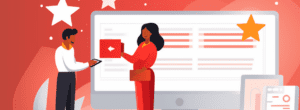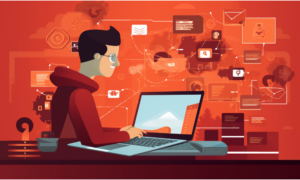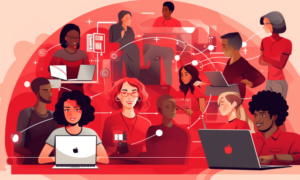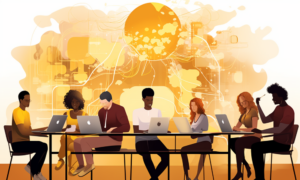AI and the future of work: The rising tide HR can not ignore
- 6 Min Read
Now is the time for those who lead in HR to lead the way in ensuring AI tools are used to empower workers to solve the problems of today and tomorrow.
- Author: Gary Bolles
- Date published: Feb 20, 2023
- Categories
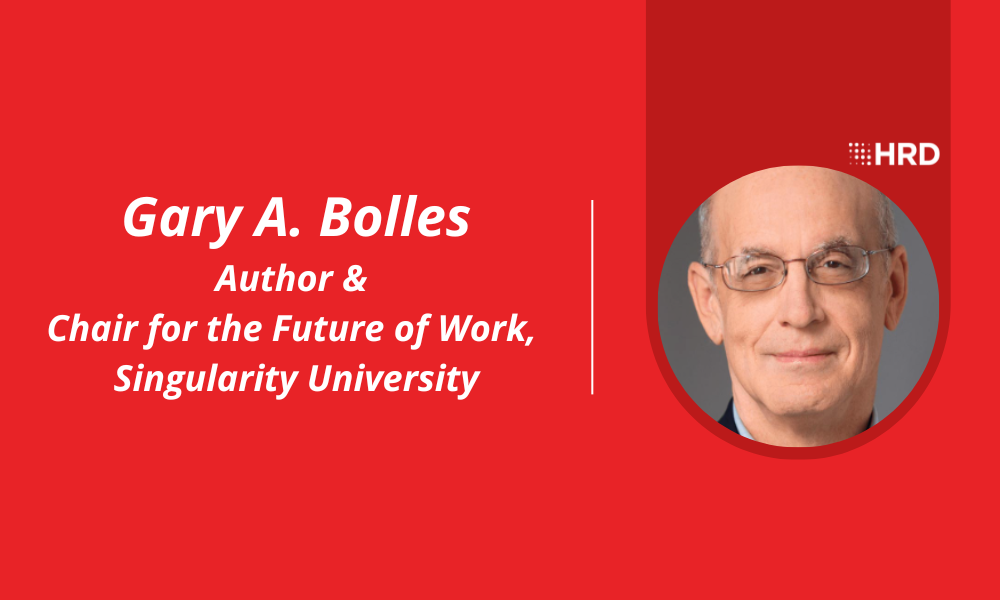
AI’s quiet tsunami represents a unique opportunity for HR
People who lead in HR organizations have had a nearly impossible set of responsibilities in recent years. Responding to the great reset of a global pandemic, navigating flexible work in a post-pandemic world — and now a quiet tsunami of Artificial Intelligence applications dominating headlines and reinvigorating concerns about the disruptive impact of technology on work.
How can people who lead in HR determine how best to manage this sudden wave of interest in these breakthrough technologies?
First, let’s review what people who lead in HR typically care about. They want to encourage a consistent mindset that knits together the organization. They are responsible for ensuring the organization has the skillset it needs from workers to solve the problems for today and tomorrow. And they need to ensure that workers have the toolset of techniques and technologies to help create value for the organization’s stakeholders.
The raft of new Artificial Intelligence (AI) technologies represents a next-generation toolset that has moved to the forefront of many conversations about the role of HR and technology. While so-called “generative AI programs” — which can automate the creation of content like text, images, and video — have dominated many of the headlines, there are many different ways that AI tools can fuel HR’s efforts to power the workforce of today and tomorrow.
Four areas of opportunity: Growth, Effectiveness, Membership, and Synchrony
Our GEMS model offers a way for people who lead in HR to categorize these new technologies.
Growth
AI tools can help workers throughout the organization to. Using self-inventory software that helps workers to see patterns in skills they have used before, workers can better understand their own skills, and the kinds of problems they would like to solve in the future. AI software can make recommendations for the kinds of subjects that workers may want to learn more about, and offer insights into future career opportunities.
Effectiveness
Taken to the extreme, an obsessive focus on “performance” can lead to a toxic culture. But pretty much everyone can sign up to be effective in their work. AI tools can increase effectiveness by helping workers to improve their understanding of how to better solve problems. AI software can also help by automating repetitive tasks and generating “first draft” creative work — so long as HR ensures this doesn’t automate workers out of jobs, but instead gives them the freedom to be more effective in their current work, and the time and support to learn new skills — thereby increasing their opportunities for Growth.
Membership
The mindset in many organizations is that the connection between workers and their work should be measured by “engagement.” Gallup’s most recent annual poll finds about a third of workers to be “engaged.” While the metrics Gallup uses are useful — clarity of expectations, opportunities for development, etc. — a more useful mindset focuses on “Membership.” Picture a Venn diagram of a circle with the skills and other attributes the worker brings to the organization, matched up to a circle reflecting their current work role. A large amount of overlap would reflect Membership, a high degree of connection between the worker and their role. More minimal connection would have the opposite result, with far less overlap between circles.
AI software tools can help to increase that “degree of Membership” by helping workers, teams, and “team guides” (the person formerly known as The Manager) a greater ability to define work roles, and to match roles to worker skills and to the problems to be solved. The tools can also provide the organization with insights about how to continually increase the diversity, equity, inclusion, and belonging (DEIB) that workers feel, by removing bias in work role definition, recruiting and hiring, team composition design, and ensuring equitable access to paths to promotion.
Synchrony
As organizations embrace flexible work and distributed teams, the challenges of keeping workers in sync rises. AI tools can help to increase communication, maintain a clearer understanding of that tasks that each worker is focused on, and keep track of tasks as they are performed. AI tools can also incorporate information about the organization’s constantly-changing strategic goals, and show workers how they can maintain synchrony between their individual work, the work of the team, and the organization.
HR also has the ability to turn its focus of all of these tools on HR itself. People in HR can focus on their own Growth, demonstrating to others in the organization their personal commitment to AI-fueled lifelong learning. HR can improve its own Effectiveness by leveraging AI tools for tasks ranging from information management to legal and other operational functions, streamlining its own work. Membership can be improved in HR by ensuring its own composition reflects the DEIB goals for the organization. Finally, AI tools can increase HR’s own Synchrony by ensuring alignment of its own efforts with the organization’s strategic goals.
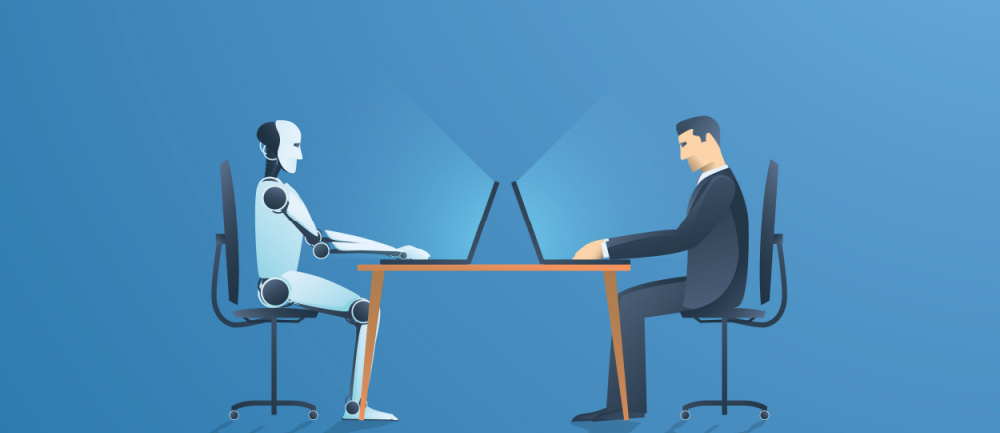
Ensuring human-centric outcomes using AI
Our technologies inevitably unleash a variety of potential challenges, and HR is uniquely positioned to help ensure these tools are used to ensure more human-centric work.
One increasing result of task automation can be the “roboticization” and elimination of work. Work becomes robotized when Effectiveness software tools are used in work roles like customer service to enforce standards and prescribe worker activities that squeeze the creativity and agency out of workers. And while these tools can indeed “free up” workers to do other tasks, there is a label for a 100% “freed up” worker: Unemployed. It is HR’s responsibility to ensure that the automation of tasks is performed in parallel with Growth activities that ensure workers will always have the skills they need — and the connection to new work opportunities — to continue providing value to the organization’s stakeholders.
As far as HR’s own effectiveness, while there are many potential ways that AI programs can aid decision-making, it is critical that HR decision-makers commit to understanding and eliminating the use of software containing implicit bias. While decision-making thrives on data, a significant amount of worker-related data in many organizations is gathered through processes like hiring and promotion that often have deep biases baked into the systems in which they operate. That’s how some tools have proven to simply reinforce the biases they were supposed to eliminate. Many of the articles about the new crop of generative AI tools continue to show how easily bias can creep in. HR must commit to relentlessly designing systems and testing software to ensure they are unbiased.
The tsunami of AI tools is unlikely to diminish anytime soon. Now is the time for those who lead in HR to become knowledgeable about their operations and their use, and to lead the way in ensuring they are used to empower workers to solve the problems of today and tomorrow.
_______________
Gary A. Bolles is the author of “The Next Rules of Work: The mindset, skillset, and toolset to lead your organization through uncertainty,” and serves as Chair for the Future of Work for Singularity University.






